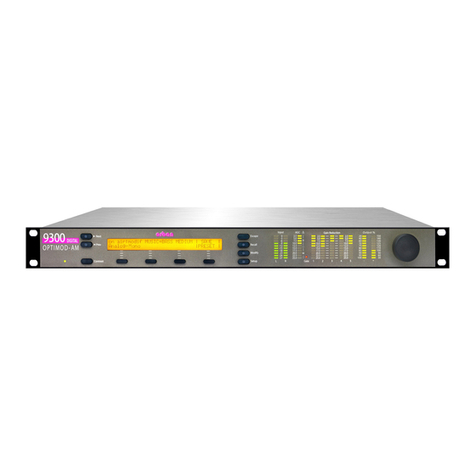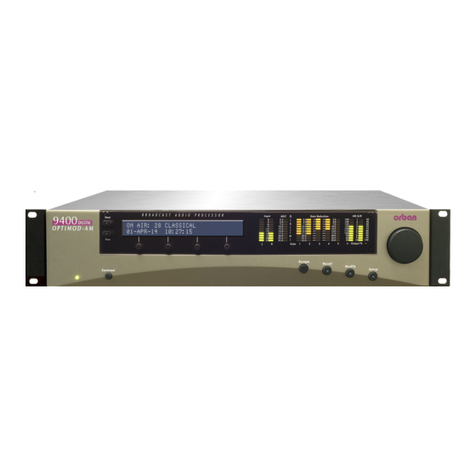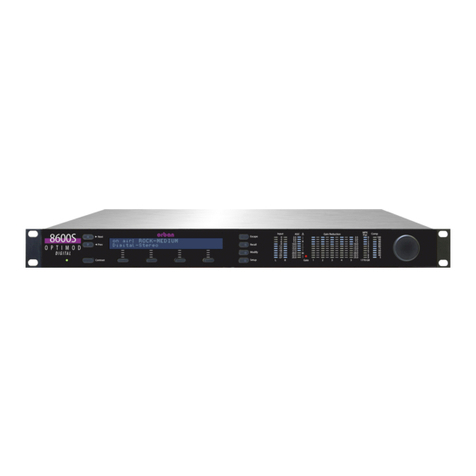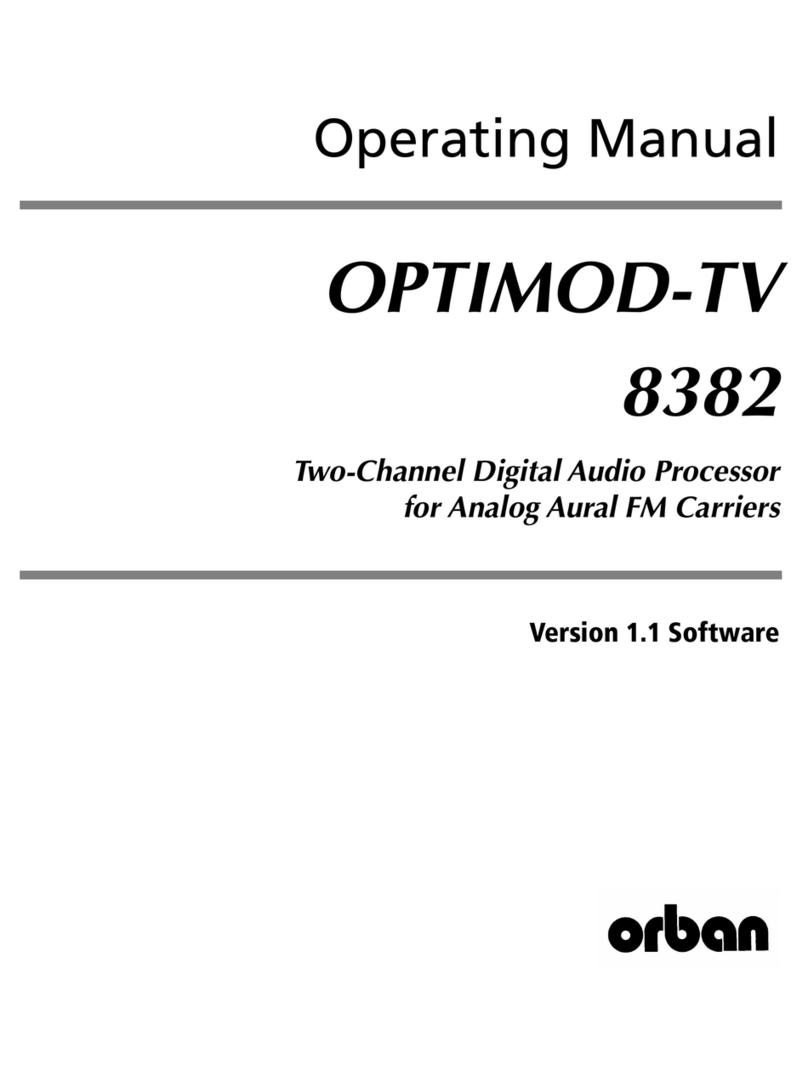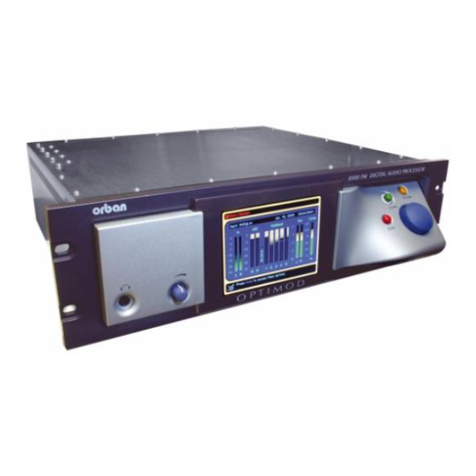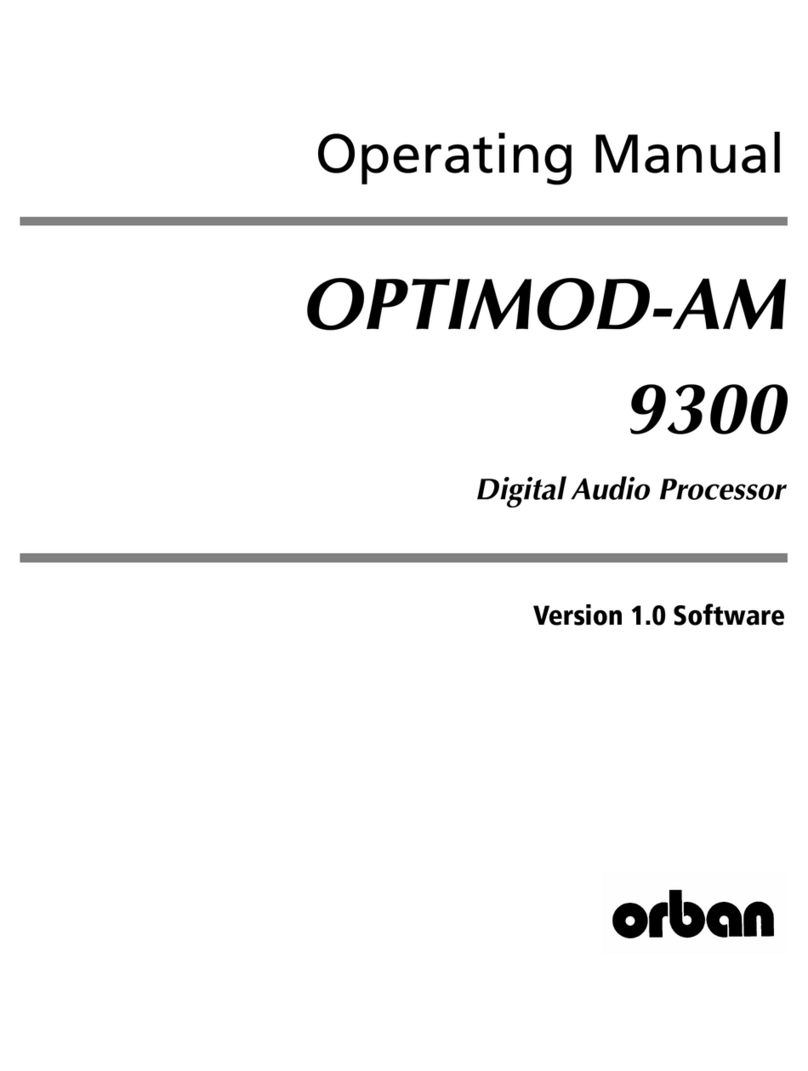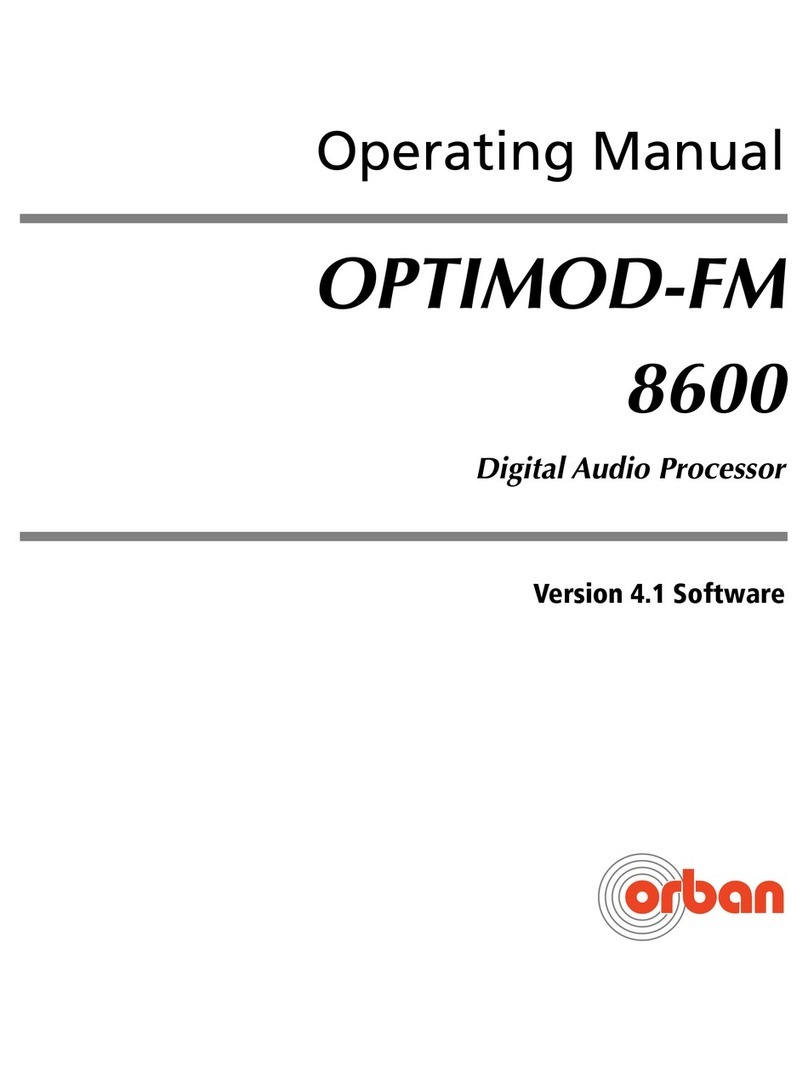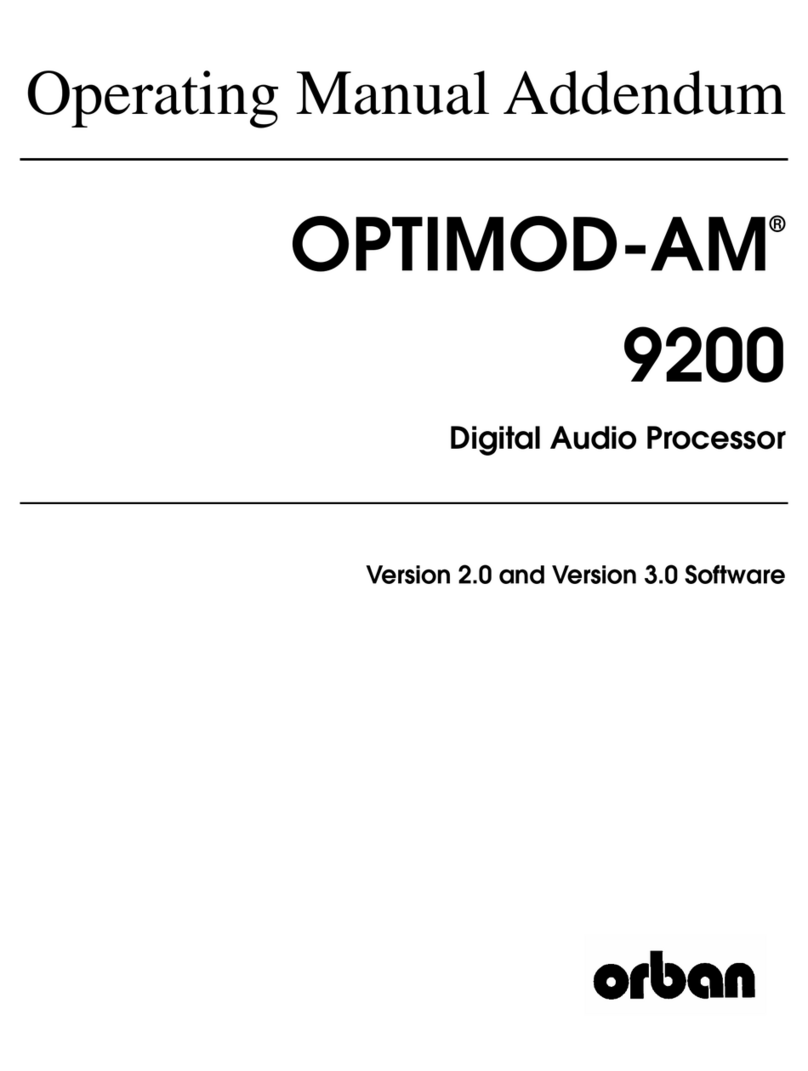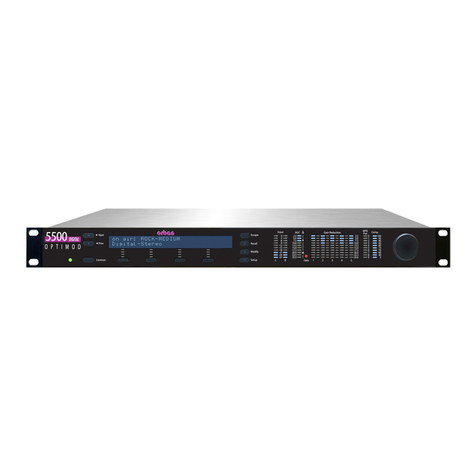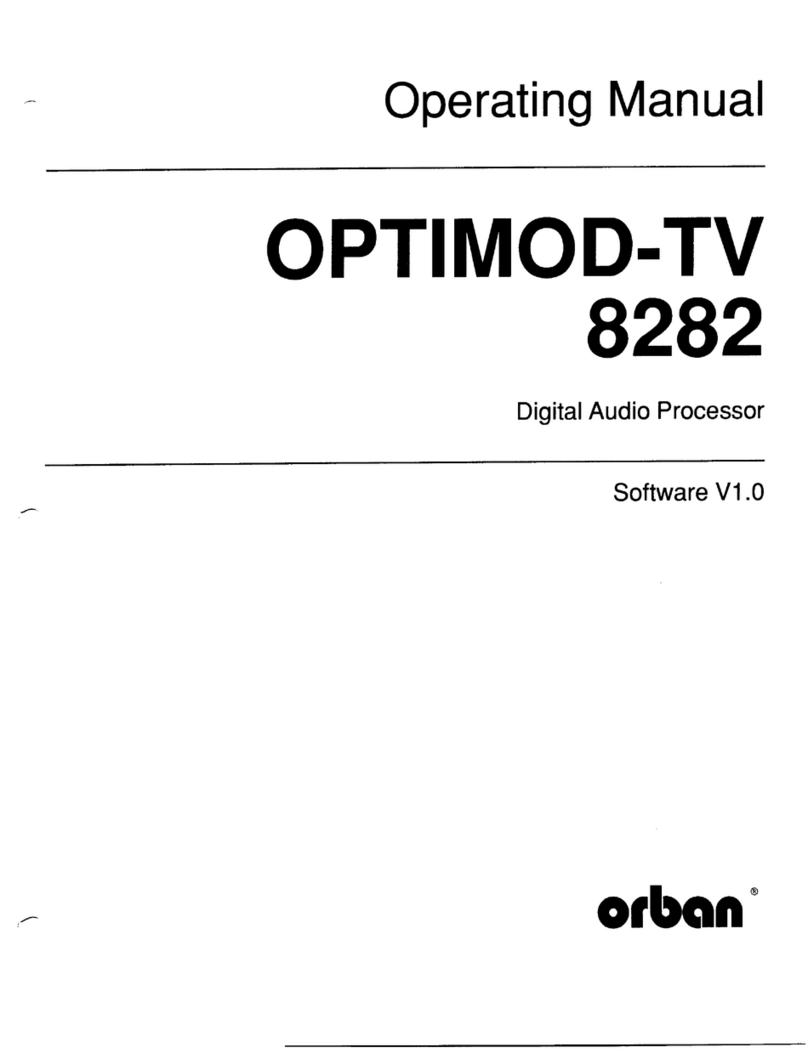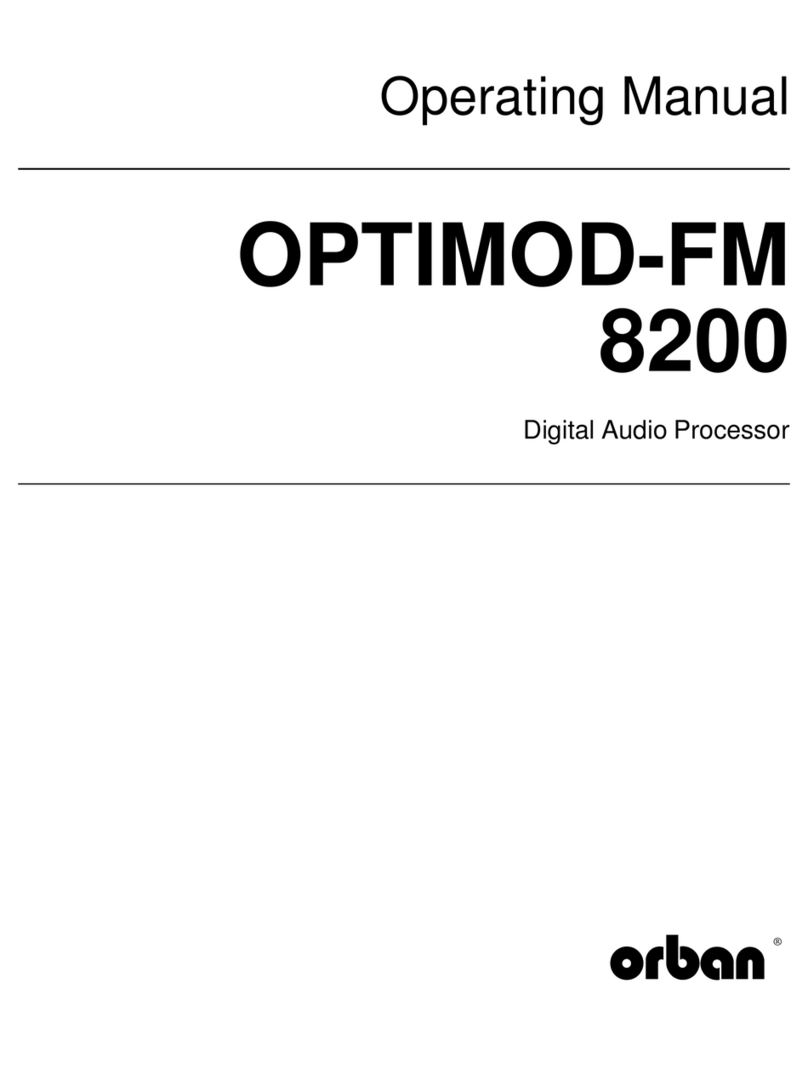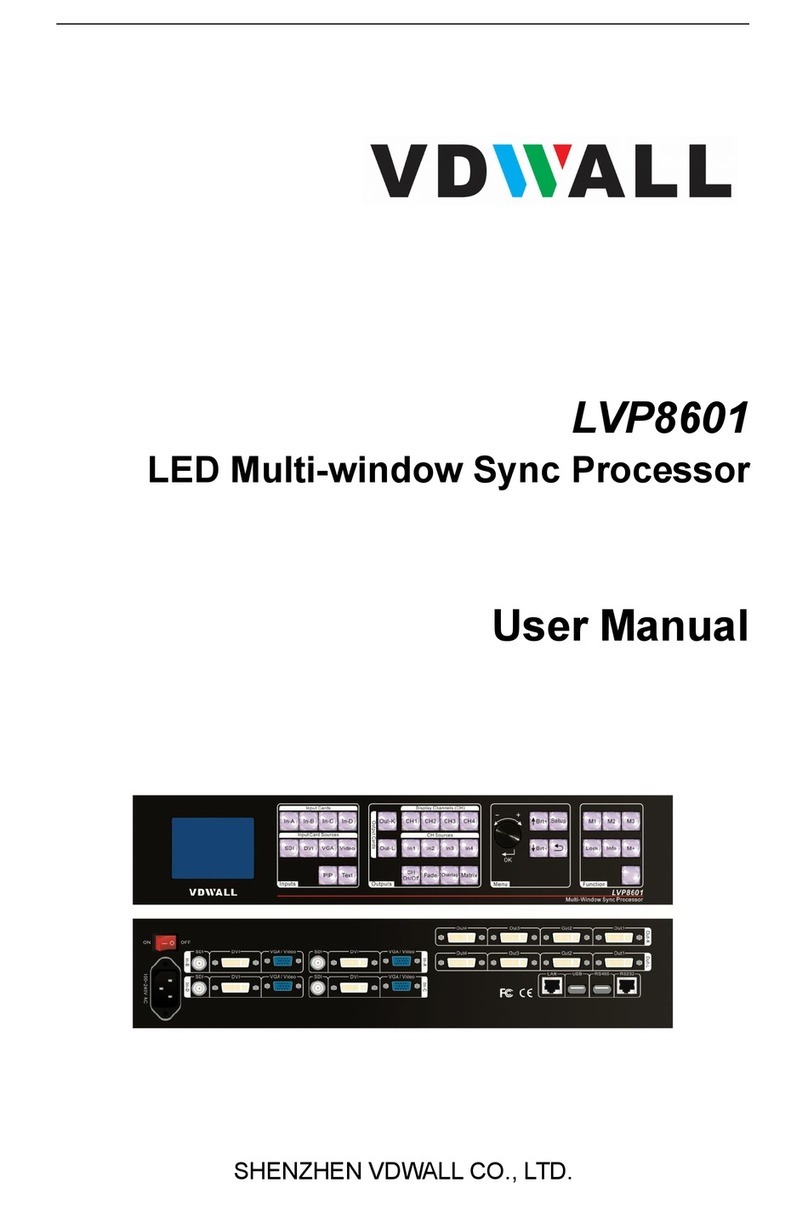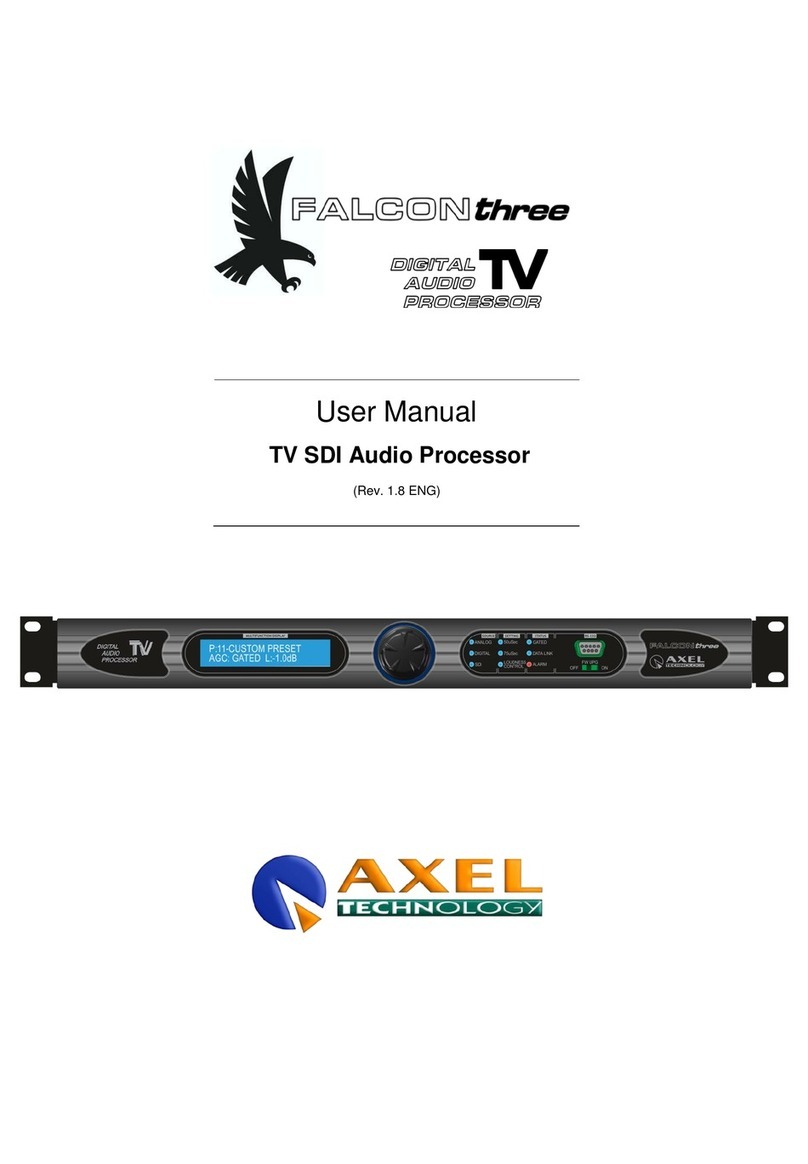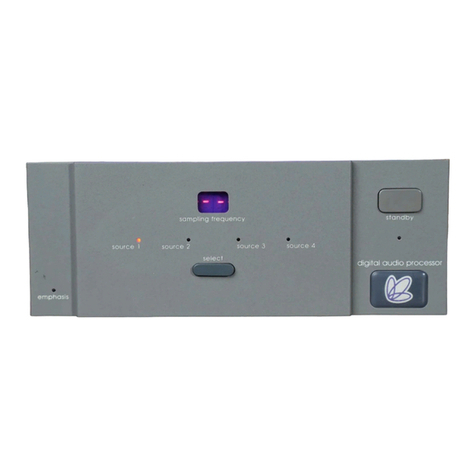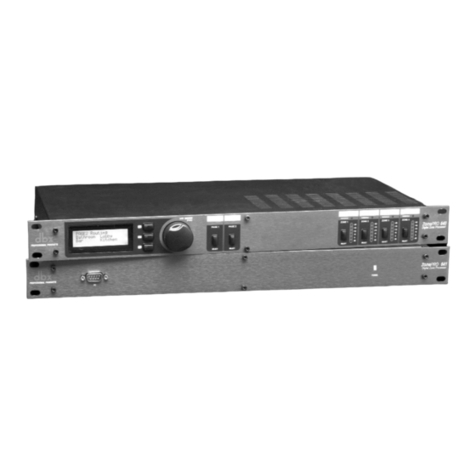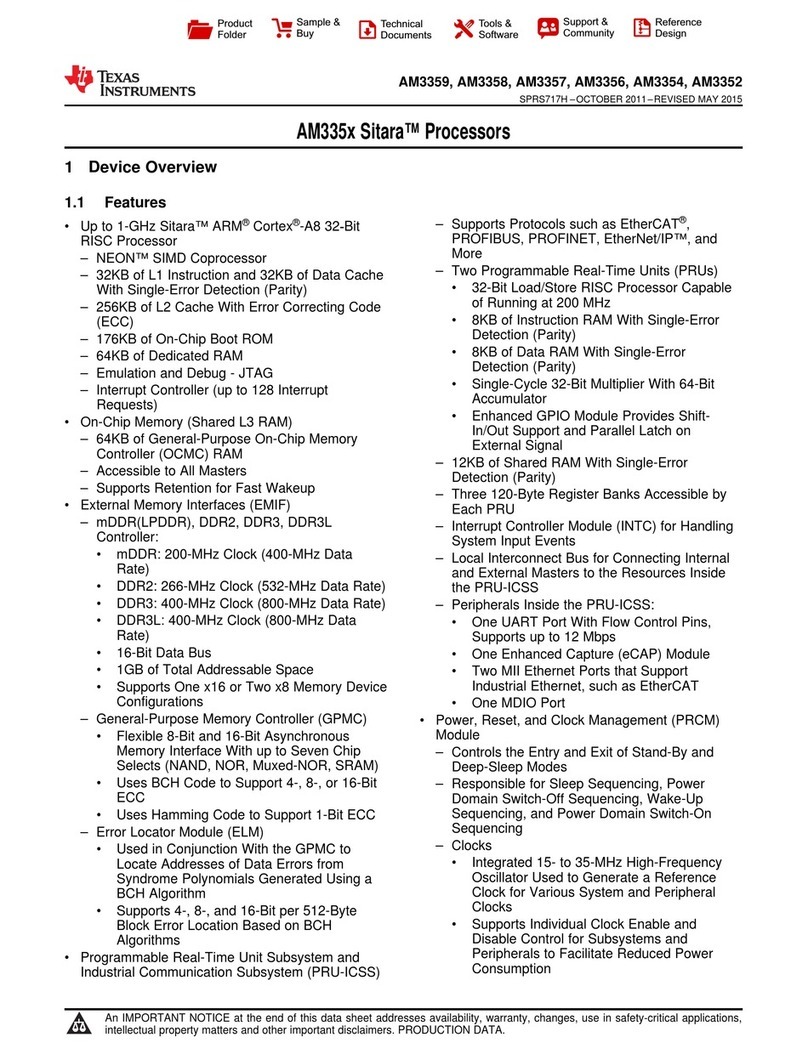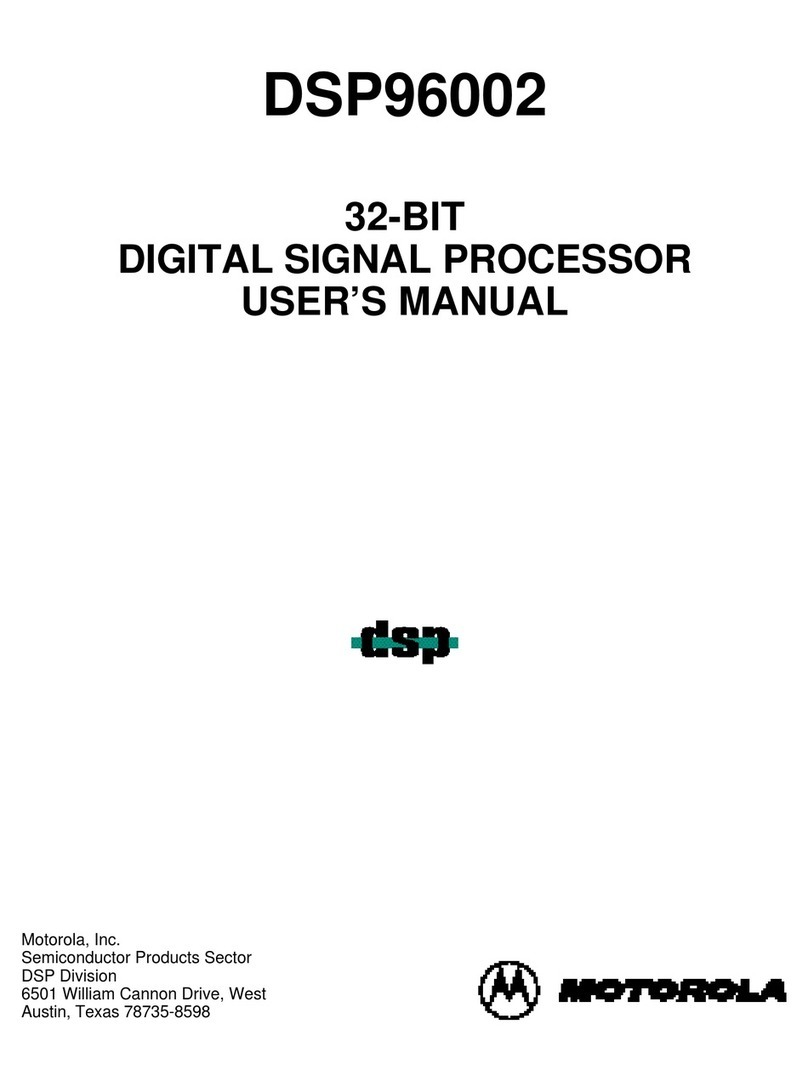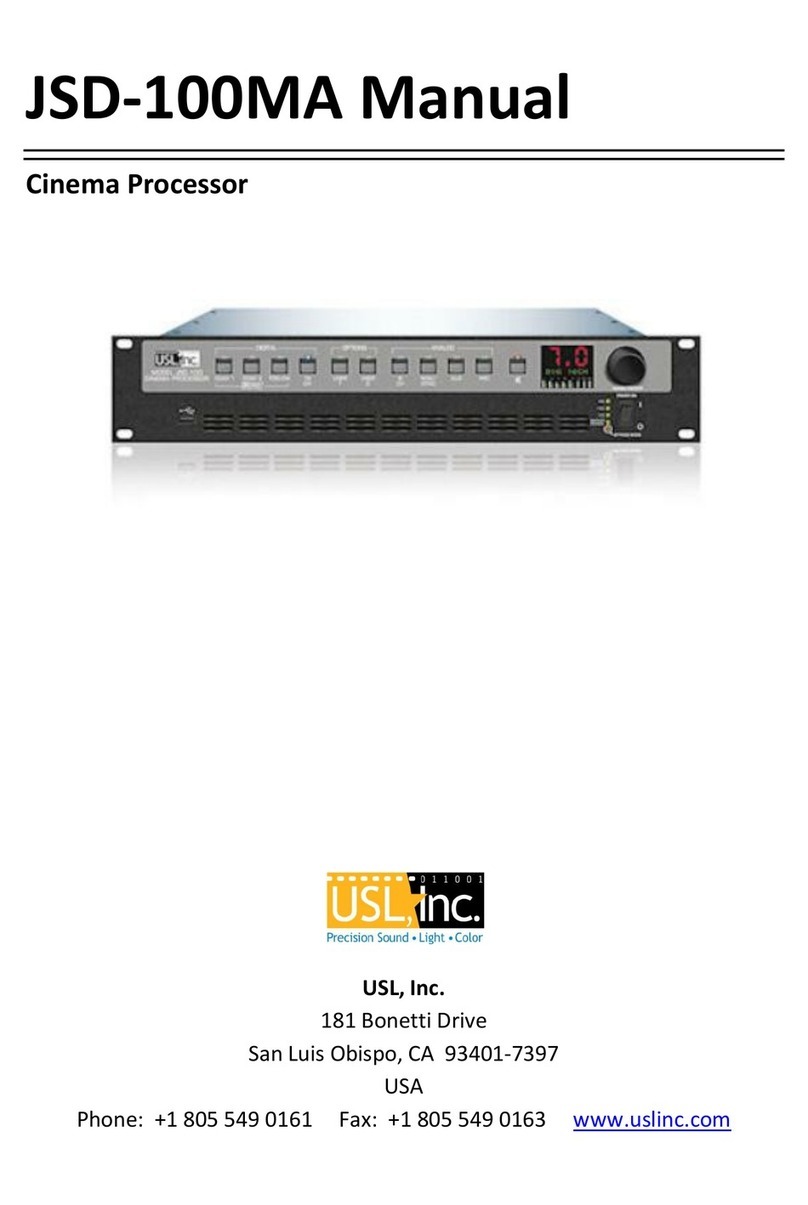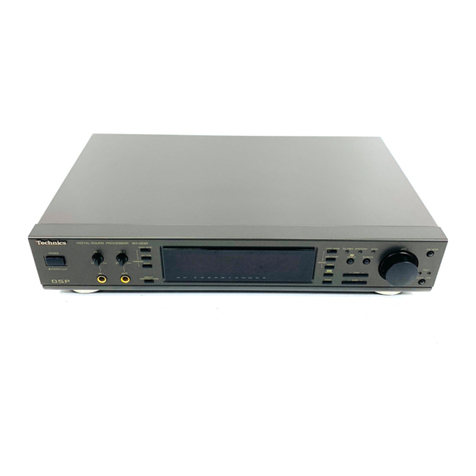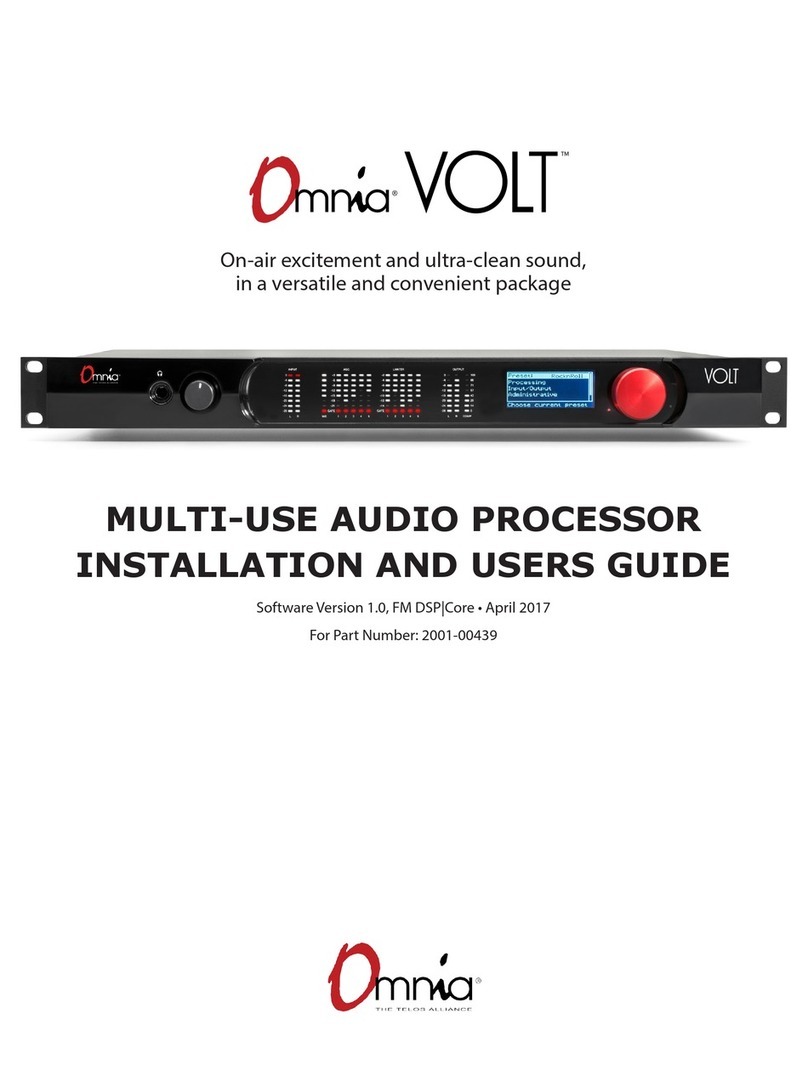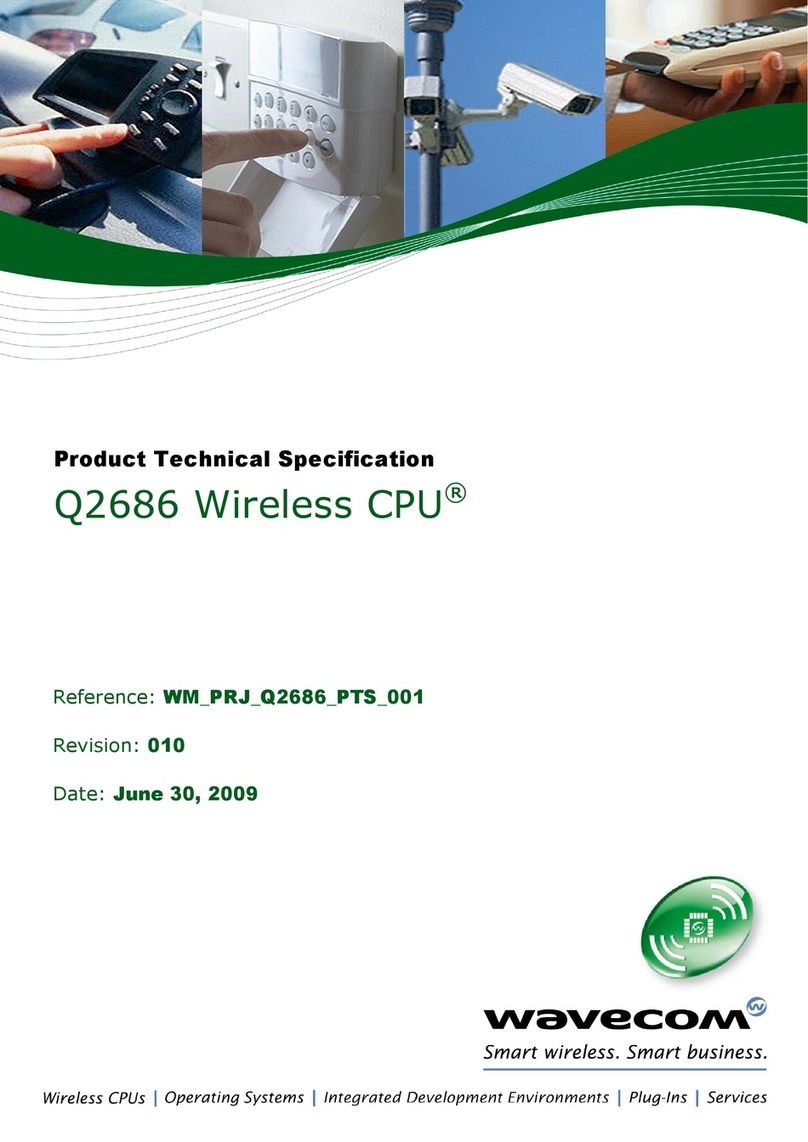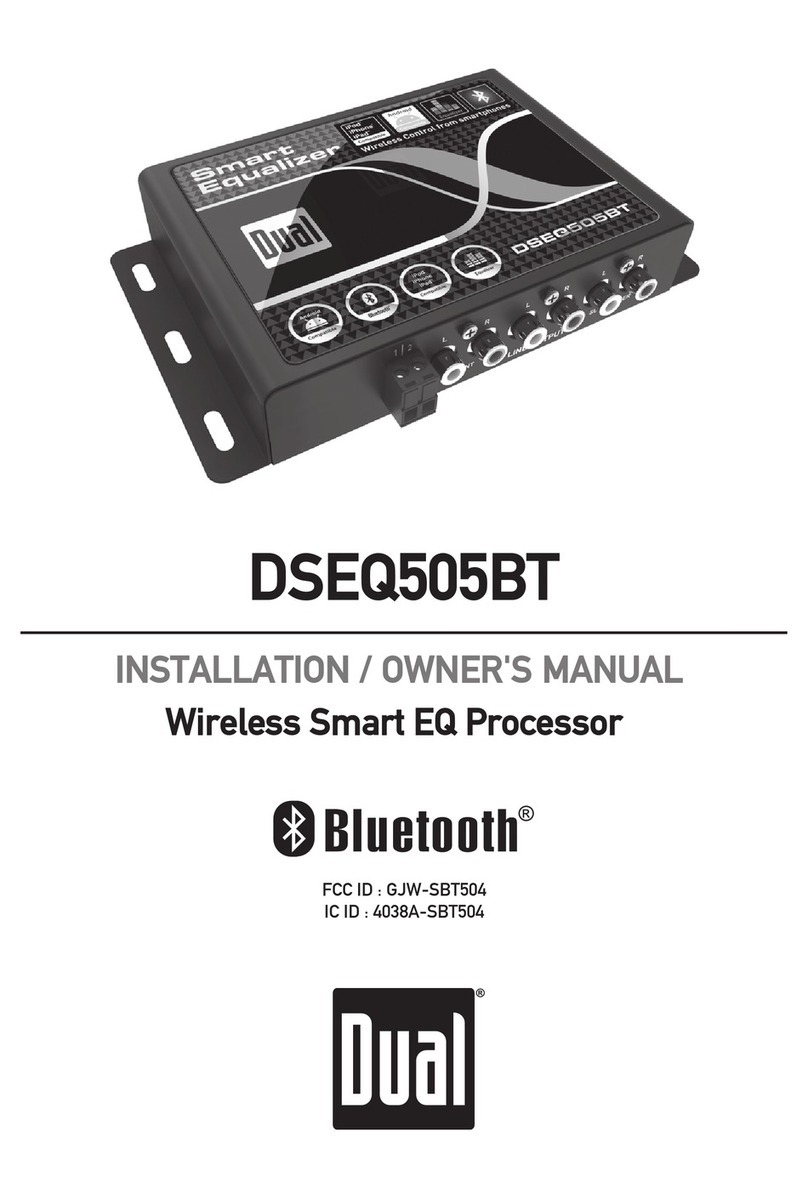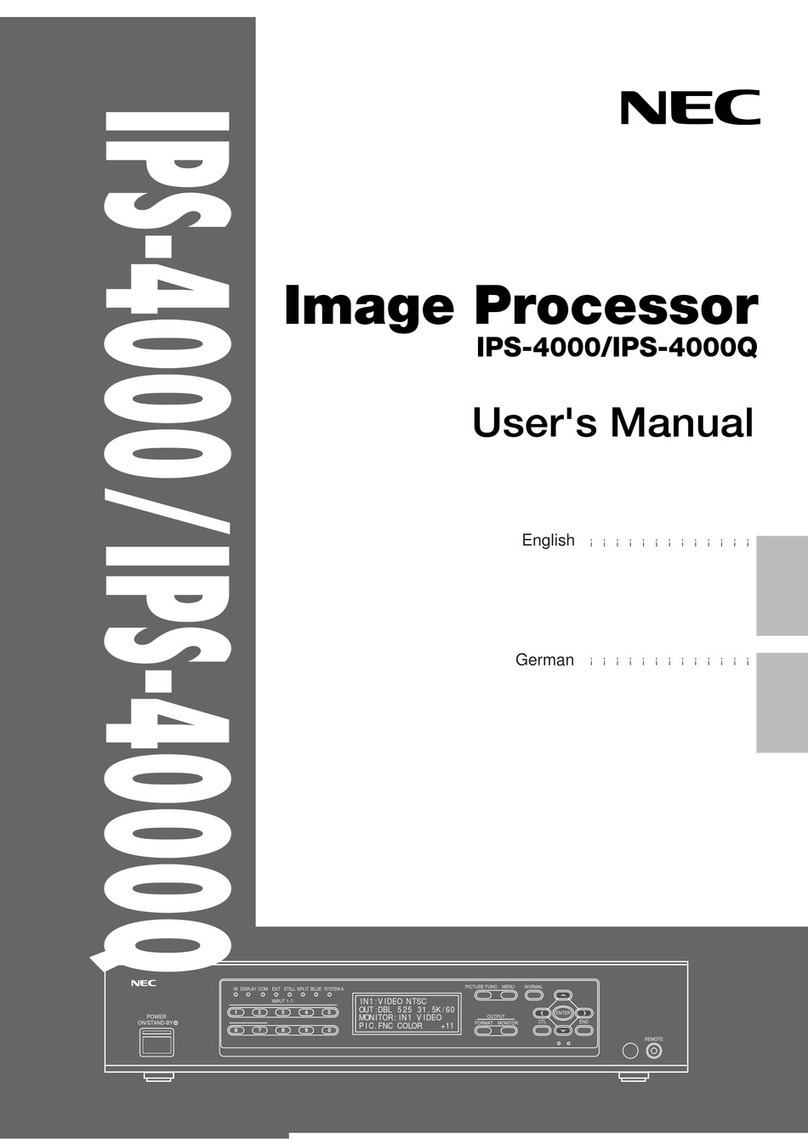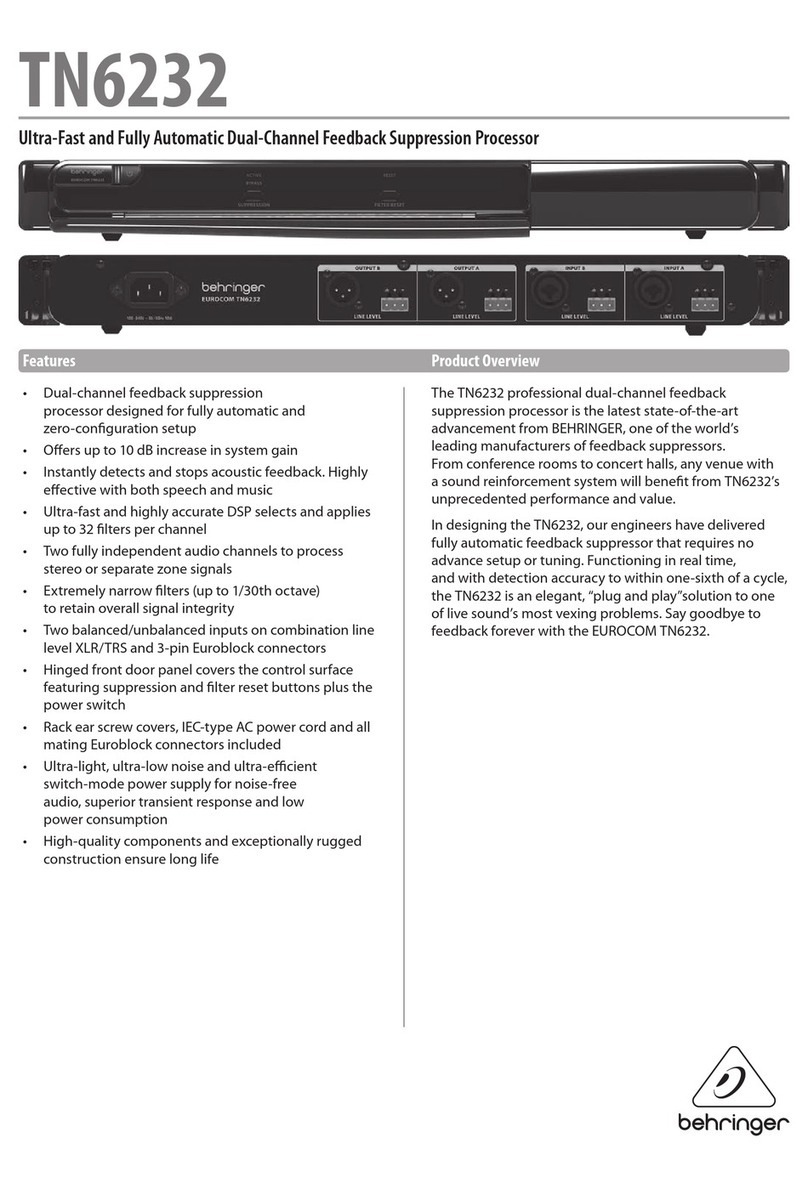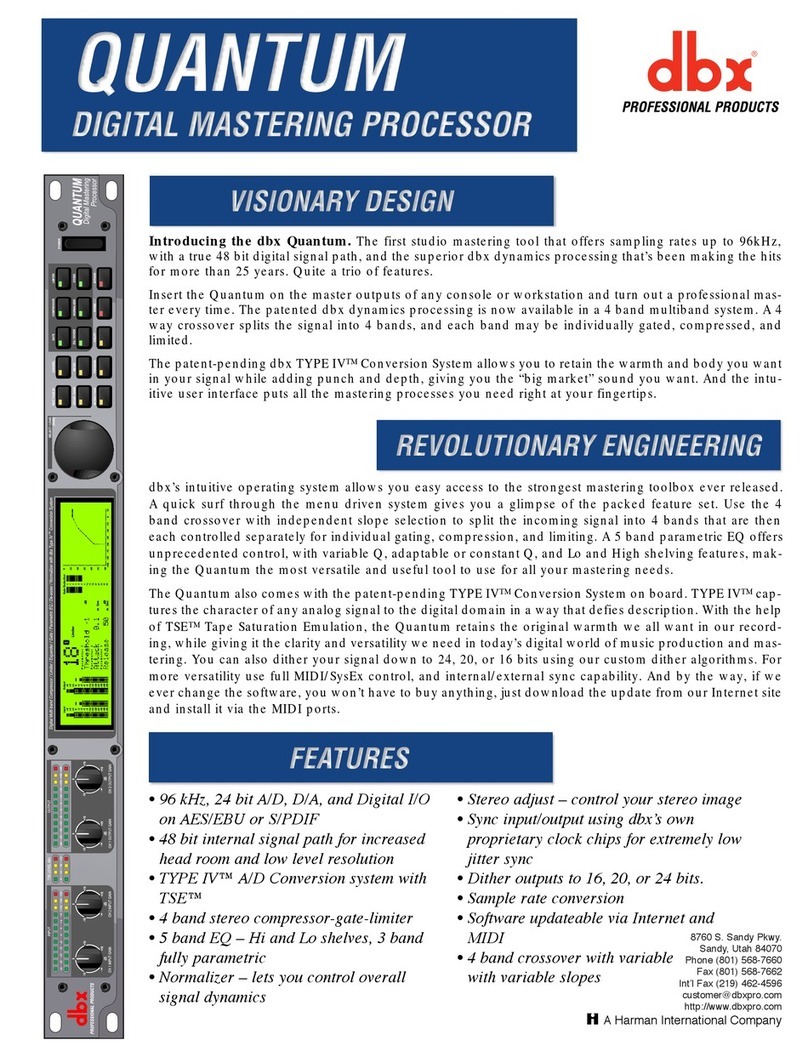
Safety Instructions (German)
Gerat nur an der am Leistungsschild vermerkten Spannung und Stromart betreiben.
Sicherungen nur durch solche, gleicher Stromstarke und gleichen Abschaltverhaltens ersetzen. Sicherungen nie uberbriicken.
Jedwede Beschadigung des Netzkabels vermeiden. Netzkabel nicht knicken Oder quetschen. Beim Abziehen des Netzkabels den
Stecker und nicht das Kabel enfassen. Beschadigte Netzkabel sofortauswechseln.
Gerat und Netzkabel keinen ubertriebenen mechanischen Beaspruchungen aussetzen.
Um Beruhrung gefahrlicher elektrischer Spannungen zu vermeiden, darf das Gerat nicht geoffnet werden. Im Fall von Betriebsstorun-
gen darf das Gerat nur Von befugten Servicestellen instandgesetzt werden. Im Gerat befinden sich keine, durch den Benutzer
reparierbare Teile.
Zur Vermeidung von elektrischen Schlagen und Feuer ist das Gerat vor Nasse zu schutzen. Eindringen von Feuchtigkeit und
Flussigkeiten in das Gerat vermeiden.
Bei Betriebsstorungen bzw. nach Eindringen von Flussigkeiten oder anderen Gegenstanden, das Gerat sofort vom Netz trennen und
eine qualifizierte Servicestelle kontaktieren.
Safety Instructions (French)
On s'assurera toujours que la tension et la nature du courant utilise correspondent bien aceux indiques sur la plaque de I'appareil.
N'utiliser que des fusibles de meme intensity et du meme principe de mise hors circuit que les fusibles d’origine. Ne jamais shunter les
fusibles.
Eviter tout ce qui risque d'endommager le cable seceur. On ne devra ni le plier, ni I'aplatir. Lorsqu’on debranche I'appareil, tirer la fiche
et non le cable. Si un cable est endommage, le remplacer immediatement.
Ne jamais exposer I’appareil ou le cable a une contrainte mecanique excessive.
Pour eviter tout contact averc une tension electrique dangereuse, on n'oouvrira jamais I'appareil. En cas de dysfonctionnement,
I'appareil ne peut etre repare que dans un atelier autorise. Aucun element de cet appareil ne peut etre repare par I'utiiisateur.
Pour eviter les risques de decharge electrique et d'incendie, proteger I'appareil de Phumidite. Eviter toute penetration d'humidite ou fr
liquide dans I'appareil.
En cas de dysfonctionnement ou si un liquide ou tout autre objet apenetre dans I'appareil couper aussitot I’appareil de son alimentation
et s'adresser aun point de service apresvente autorise.
Safety Instructions (Spanish)
Hacer funcionar el aparato solo con la tension yclase de corriente senaladas en la placa indicadora de caracterlsticas.
Reemplazar los fusibles solo por otros de la misma intensidad de corriente ysistema de desconexion. No poner nunca los fusibles en
puente.
Proteger el cable de alimentacibn contra toda dase de dahos. No doblar oapretar el cable. Al desenchufar, asir el enchufe yno el
cable. Sustituir inmediatamente cables danados.
No someter el aparato yel cable de alimentacibn aesfuerzo mecanico excesivo.
Para evitar el contacto con tensiones electricas peligrosas, el aparato no debe abrirse. En caso de producirse fallos de funcionamiento,
debe ser reparado solo por talleres de servicio autorizados. En el aparato no se encuentra ninguna pieza que pudiera ser reparada por
el usuario.
Para evitar descargas electricas eincendios, el aparato debe protegerse contra la humedad, impidiendo que penetren esta oliquidos
en el mismo.
En caso de producirse fallas de funcionamiento como consecuencia de la penetracion de liquidos uotros objetos en el aparato, hay
que desconectarlo inmediatamente de la red yponerse en contacto con un taller de servicio autorizado.
Safety Instructions (Italian)
Far funzionare I’apparecchio solo con la tensions eil tipo di corrente indicati sulla targa riportante idati sulle prestazioni.
Sostituire idispositivi di protezione (valvole, fusibili ecc.) solo con dispositivi aventi lo stesso amperaggio elo stesso comportamento di
interruzione. Non cavallottare mai idispositivi di protezione.
Evitare qualsiasi danno al cavo di collegamento alia rete. Non piegare oschiacciare il cavo. Per staccare il cavo, tirare la presa emai
il cavo. Sostituire subito icavi danneggiati.
Non esporre I’apparecchio eil cavo ad esagerate sollecitazioni meccaniche.
Per evitare il contatto con le tensioni elettriche pericolose, I’apparecchio non deve venir aperto. In caso di anomalie di funzionamento
I'apparecchio deve venir riparato solo da centri di servizio autorizzati. Nell'apparecchio non si trovano parti che possano essere riparate
daJIutente
Per evitare scosse elettriche oincendi, I'apparecchio va protetto dall'umidita. Evitare che umidita oliquidi entrino nell’apparecchio.
In caso di anomalie di funzionamento rispettivamente dopo la penetrazione di liquidi ooggetti nell'apparecchio, staccare immedi-
atamente I’apparecchio dalla rete econtattare un centro di servizio quaiificato.
